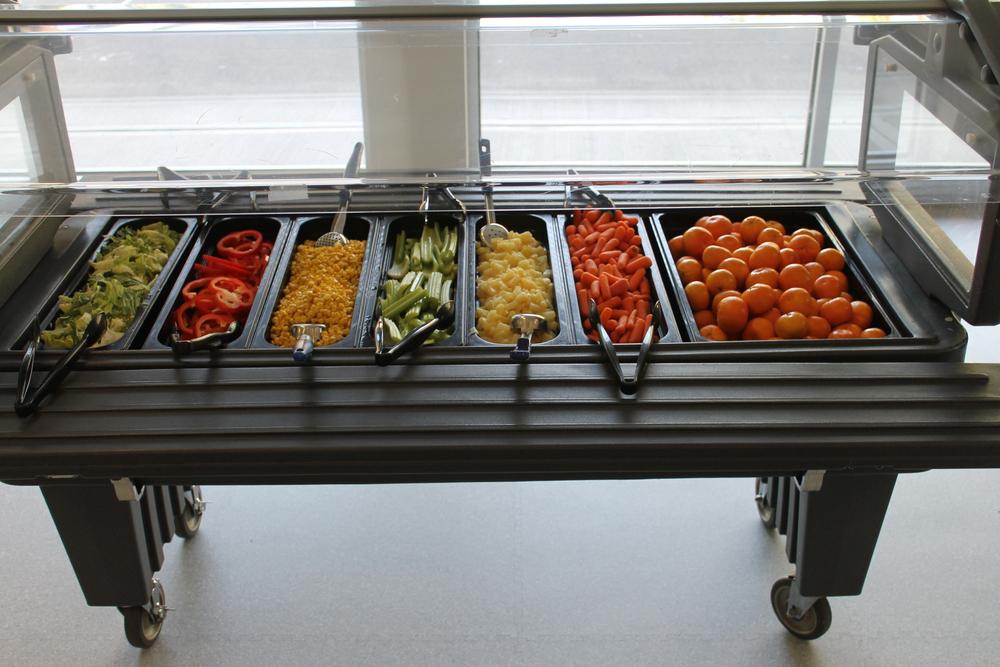 The topic of weight gain for athletic performance is an incredibly complex, tricky topic, especially for caregivers of young athletes. It can be difficult helping an athlete gain weight in a way that’s healthy from a nutritional standpoint and maintains a healthy relationship with food from a mental standpoint. Doing all of this while still making mealtime enjoyable for the whole family, and fueling your athlete appropriately for sport, can feel overwhelming.
The topic of weight gain for athletic performance is an incredibly complex, tricky topic, especially for caregivers of young athletes. It can be difficult helping an athlete gain weight in a way that’s healthy from a nutritional standpoint and maintains a healthy relationship with food from a mental standpoint. Doing all of this while still making mealtime enjoyable for the whole family, and fueling your athlete appropriately for sport, can feel overwhelming.
But here, TrueSport Expert Kristen Ziesmer, a registered dietitian and board-certified specialist in sports dietetics, offers simple explanations for why and when an athlete should focus on weight gain and easy ways that you can help them achieve those outcomes.
Evaluate the ‘Why’ for Weight Gain
If an athlete feels like they need to gain weight in order to excel in their sport, it’s important to talk about the athlete’s mental health and relationship with the scale before moving forward.
“I have parents who contact me and say that their son plays baseball or football and needs to gain weight to be competitive,” Ziesmer says. “I can understand that, but at the same time, it can easily get out of control.”
“Athletes who think they ‘need’ to gain weight can develop bigorexia—the need to be bigger,” says Ziesmer. “And for some athletes, there’s simply nothing that they can do to grow their muscles any faster as their body goes through puberty.” Simply put, there is no powder, potion, or quick fix that will help your athlete safely bulk up.
Ziesmer believes that the only time weight gain is appropriate for young athletes is when the athlete is underweight for their height and age, or is actually losing weight throughout a season. “I look at growth charts and compare that to the athlete, rather than looking at the sport they’re playing,” she says. “To gain weight just to be competitive in sport is very tricky and potentially unhealthy.”
On the flip side, not every sport celebrates weight gain, and your young athlete may be trying to stay smaller and delay puberty. In sports like running and gymnastics, athletes may be intentionally avoiding weight gain in order to fit a certain body type/size that they perceive to be best for their sport, even while hearing from a doctor that they need to be gaining weight to be in a healthy range.
A visit to your athlete’s doctor should tell you where they are on the growth chart in terms of their weight compared to their height and age. “If your athlete is below the 25th percentile and if that number is dropping, that’s a red flag,” says Ziesmer. She does note that some kids are just naturally going to be smaller, and that’s perfectly fine. The key is looking for that downward trend in the growth chart or in their BMI—if it continues to track lower and lower, intervention may be required.
How to Support Healthy Weight Gain
1. Look at the overall diet—not one specific meal
At TrueSport, we talk a lot about what to eat around practice and competition, but we also focus on what an athlete is eating throughout the day. Ziesmer notes that especially where weight gain is a goal, caretakers need to be even more focused on the athlete’s total intake, not just how they fuel for training.
2. Hone the athlete’s plate
Helping your athlete gain weight does not mean taking them out for fast food and milkshakes for every meal. “First, I would recommend looking at their overall diet and asking yourself if most of their meals follow the guidelines laid out for an athlete’s plate, where every meal has an appropriate amount of carbohydrates, protein, fat, and vegetables,” Ziesmer says.
“A plate for a heavier training day should be half covered in carbohydrates, a quarter protein, a quarter vegetables, and a couple of thumbs of fat. This should be your athlete’s normal meal ratio if they’re trying to gain weight.”
2. Add liquid calories
Your athlete may simply not be eating enough during these mealtimes. “Some kids who are on the smaller side or who tend to lose weight easily have a hard time eating enough food at one time,” Ziesmer says. “In these cases, I would suggest adding more calories in the form of easy-to-eat liquids. For example, they could incorporate a healthy smoothie as a snack after a meal.”
4. Use healthy, dense fats
“Adding high calorie and nutrient dense foods to meals and snacks is a great strategy,” says Ziesmer. “Peanut butter or any type of nut butter is great. Adding avocado and cheese to dishes can be helpful. Cooking food in olive oil or avocado oil rather than a no-calorie spray is good. And you can always throw some chia seeds and flax seeds into smoothies.”
5. Have snacks on hand
“Snacking often is really important for weight gain as well, and it usually works better than trying to have three giant meals a day,” says Ziesmer. “Aim for your athlete to eat six times a day, including smoothies and easy snacks. And as always, make sure they’re fueling appropriately around their sport.”
6. Be aware of family dynamics
Be aware of how one athlete’s need to gain weight can impact their siblings. It can be difficult helping an athlete gain weight if you have more than one child in the family and not all of them are sharing in the struggle to put on pounds. Avoid singling out your athlete who needs to gain weight (or pointing out to your other children that they don’t need to gain weight).
Instead, Ziesmer suggests simply focusing on balancing your athlete’s plate slightly differently. “They can still eat the same foods, but how you’re balancing the plate is going to be different,” she says. They can eat the same chicken burrito bowl as their siblings, but perhaps with an extra scoop of rice and an extra handful of shredded cheese or scoop of guacamole. Similarly, the athlete who is underweight may have full-fat Greek yogurt while their siblings are eating the lower-fat version, so the meals look identical but are slightly different from a nutritional standpoint.
7. Don’t continually emphasize their size
 The topic of weight gain or body size shouldn’t be a constant source of conversation in your household. Even well-meaning comments about an athlete’s body can be misconstrued or internalized and can lead an athlete to develop an unhealthy relationship with food, says Ziesmer. Constantly pointing out an athlete’s size—whether it’s that they’re currently small or that they’re beginning to gain weight—can create more struggles with body image.
The topic of weight gain or body size shouldn’t be a constant source of conversation in your household. Even well-meaning comments about an athlete’s body can be misconstrued or internalized and can lead an athlete to develop an unhealthy relationship with food, says Ziesmer. Constantly pointing out an athlete’s size—whether it’s that they’re currently small or that they’re beginning to gain weight—can create more struggles with body image.
“For example, when I was younger and was in cheerleading, I was smaller and everyone would always point out that me being small made me easier to lift,” she says. “Those comments made me think that I needed to stay small for my age and height. And today, I hear from so many girls and boys who are in that situation: They’re told that they need to gain weight to be healthy, but they’ve been praised for their small size.”
8. Work with an expert
It’s important to get expert help if you believe that your athlete needs to gain a significant amount of weight, needs to gain weight in a limited time frame, or you’re concerned that your athlete’s mental health is at risk due to an issue with their body image.
“Often, athletes who are in these situations will be best served by consulting with an expert, whether that’s a sports dietitian or a therapist,” Ziesmer explains. A dietitian can help you and your athlete put together a smart fueling strategy for optimum weight gain, while a therapist who specializes in body image issues and athletes may be best served to help an athlete unpack a complicated relationship with weight gain.
______________________________
Takeaway
When focusing on weight gain, look at the full day of eating, and subtly increase the caloric and nutritional density of meals by adding extra servings of carbohydrates and healthy fats. Your athlete may need extra meals and snacks to meet their higher caloric needs, so don’t expect them to simply increase the volume of food they can comfortably eat during meals. Finally, don’t be afraid to seek expert help from sports dietitians and therapists who can help your athlete better understand themselves and their bodies’ needs.



